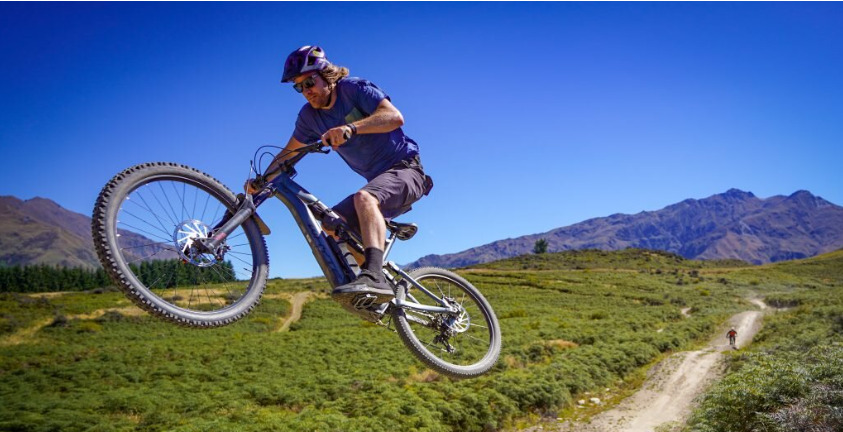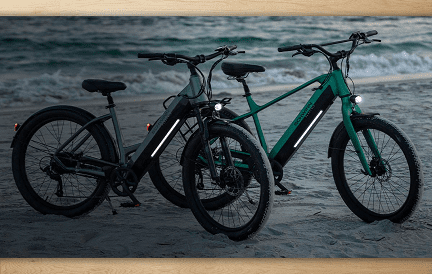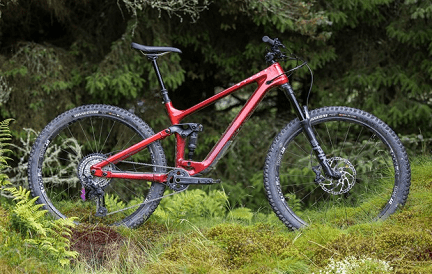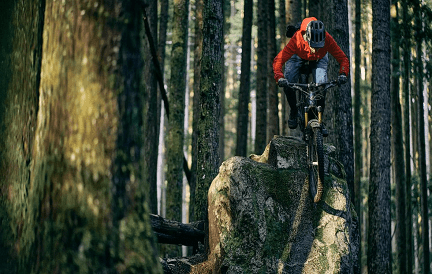If you ride a mountain bike, you’ve probably heard about 650b in inches, or your bike might even be equipped with them. However, what are the benefits and drawbacks of 650b inches? Note: the terms “mtb 650b” and “27.5in” are synonymous.
- Part 1: General Description of Mountain Bike Riding
- Part 2: The Advantages and Disadvantages of Best 650b Mountain Bike
- Part 3: What is the Main Difference Between Wheels that Are 650b Inches and 700C
- Part 4: Why Best 650b MTB? A Remark Regarding the Volume and Diameter of 650b Inches and 700c Tires
- Part 5: A Quick History Lesson: Why have Mountain Bikes Traditionally Used Wheels with a Diameter of 26 Inches
- Part 6: Conclusion
Part 1: General Description of Mountain Bike Riding
The word “650b” comes from the French sizing system. In which the number represents the approximate diameter of the wheel (including the tire), and the letter represents the approximate width. The 700c standard for road bike wheels comes from the same place.
When measured from tire edge to tire edge, the diameter of a wheel is said to be 650b if it is around 27.5 inches. This is in comparison to the conventional mountain bike wheel, which is 26 inches, and the so-called “29er” wheels, which measure 29 inches.
It is important to keep in mind. That this is merely a ballpark estimate because the sizes of tires can vary quite a bit, a high-profile tire that is installed on a wheel with a 26-inch diameter will often have a diameter of 27 inches or greater.

If you install high-profile tires on 26-inch wheels, you’ll have a fair idea of how 650-millimeter wheels with lower volume tyres, like Maxxis’ normal 2.5-inch-wide Minions, would feel.
To put it another way, and in order to provide a more direct comparison, the diameter of a 29-inch/700c rim is 622 millimeters when measured from rim bed to rim bed, whereas the diameter of a 650b rim is 584 millimeters.
The wheel size has seen a return to its drop-bar beginnings after having fallen out of favor for a considerable amount of time. More recently, 650B wheels have found momentum in the world of gravel riding.
Gravel riders have a growing number of aftermarket 650b wheels and tires to choose from, and some gravel bike companies have moved away from the 700c wheel standard and toward the smaller 650b wheel.
Why this
This came about because people wanted to improve the grip and comfort of gravel bikes by giving them wider tires with the same or almost the same outside circumference and diameter as a 700c setup with a narrower tire.
Part 2: The Advantages and Disadvantages of Best 650b Mountain Bike
1. What are the Benefits Associated with Using 650b Inches Wheels
a.Diameter
Wheels with a diameter of 650b inches or 27.5 inches offer much of the quick acceleration and nimble sensation of mountain bike wheels with a diameter of 26 inches, but with a nod towards the smoother feel, additional stability, and better traction of wheels with a diameter of 29 inches offer. They are also better suited for riders of smaller stature than 29ers are.
b. Riders and Construction
Many riders find that 650b wheels are the perfect middle ground between 26-inch and 29-inch mountain bike wheels. This makes them a very popular choice in all mountain bike disciplines.
It is possible to construct frames for 27.5-inch wheels by making use of the geometry that is established for 26-inch wheels. These frames, from our perspective at least, typically end up looking neater than the frequently gangly-looking 29ers, and they have slightly better clearances.
Lower air pressures are possible with gravel riders, thanks to the bigger volume tyres that come standard with 650B rims.
In turn, this makes the rider more comfortable because the thickness of the sidewall and the overall volume of the tyre absorb some of the bumps in the road. This keeps the bumps from resonating through the rider’s body.
When using mtb 650b wheels, riders can also use high-volume tires without changing the geometry of the frame or the way the bike handles.
For instance, a tyre with a diameter of 42 millimeters when mounted on a 650b rim has the same diameter as a tyre with a diameter of 23 millimeters when mounted on a 700c rim. This lets a gravel rider get the possible benefits of a softer and stickier tire without having to change the geometry of the frame, which could change how a bike handles.
c. Weight
If you are going to compare two wheel builds that are otherwise identical, but one of them uses 650b rims instead of 700c ones, then the smaller build is going to be lighter than the larger one. The spokes will be reduced in length, and the diameter of the rim will be shrunk.
On the other hand, the rim with the lower diameter might be wider, which would result in an increase in weight. It is also possible that it is more rigid, but the larger tire should help to counteract this effect.
2. What are Some of the Drawbacks Associated with 650b in Inches Wheels
a. Jack of all Trade
When it comes to mountain bikes, some people believe that the mtb 650b or 27.5in wheel is a jack-of-all-trades but a master of none. This is because it does not smooth out trail undulations as well as a 29-inch wheel and does not provide as much traction. It is also slower to accelerate than a 26-inch wheel and is not as agile at low speeds.
b. Resistance
Additionally, the rolling resistance of a 650b gravel wheel or tyre is likely to be greater than that of a 700c wheel or tyre with the same overall diameter (as ever, tyre choice will have a significant part to play here).
c. Terrain
It’s also important to think about the terrain you’re riding on (any increase in rolling resistance will be felt more on smooth tarmac) and how much you value the other benefits of 650b wheels, like the comfort and grip that come with larger tyres.
It’s possible that a 700c setup will work for you if you’re the type of gravel rider who spends most of their time on the road and just sometimes ventures onto trails with smoother surfaces. Equally, if you want to ride your bike on rocky bridleways or trails that teeter on the boundary between mountain biking and cross-country riding, a high-volume 650b configuration might be a better option for you.
Because the 650b wheel size is still a relatively new trend for gravel bikes. There is now a more limited selection of wheels and tires to pick from. However, this number will increase in the near future.
In the end, your needs as a rider will determine whether you should go with a 650b/27.5in or 29in setup. Just as they will determine the bike and component options you go with.
Part 3: What is the Main Difference Between Wheels that Are 650b Inches and 700C
The diameter of the rims is what differentiates the 650b and 700c sizes from one another. 584 millimeters is the diameter of a set of 650b wheels. The diameter of a set of 700c wheels is 622 millimeters. The difference between 700c and 650B wheel diameters is 38 millimeters.
In the mountain bike world, 650b wheels and 27.5-inch wheels are the same things. Both are identical in every respect. A 700mm diameter wheel is the same size as a 29″ or 28″ wheel. The diameter of each of the three measures is exactly 622 millimeters. A road bike wheel with a 700c designation will often have a narrower rim. Wheels of the 700c size that have wider rims. Handling off-road tires, 29er wheels are an option. The term “28 inches” is a bit outdated, but you can still see it in some parts of the world.
Part 4: Why Best 650b MTB? A Remark Regarding the Volume and Diameter of 650b Inches and 700c Tires
1. Width/Diameter of Mtb 650b
The possibility to run bigger tires with greater volume is the primary factor that leads riders to select mtb 650b wheels over 700c wheels. Because the seat stays and chainstays, as well as the fork blades, widen as they move toward the hubs. Using smaller wheels enables you to place wider tires on the same frame than you would be able to with larger wheels. Because they rest on a larger portion of the frame, smaller wheels provide greater tire space than larger wheels.
For instance, the majority of gravel, touring, and cyclocross bike frames restrict the maximum tire width to be between 700c and 40-45 millimeters. Changing the wheels to 650b will often allow you to install tires with a width of 47-53 millimeters. Five millimeters of extra tire width makes a big difference in how well the car handles off-road and how comfortable the ride is.
2. Geometry of Mtb 650b
You might be wondering whether or not changing to smaller wheels will affect the geometry of the bike or the gearing. The answer is yes, although perhaps not to the extent that you might imagine. The difference in diameter between best mtb 650b wheels and 700c wheels is merely 38 millimeters. If you continue to ride with tires of the same height, this will result in the motorcycle having a seat height that is 19 millimeters lower.
However, when you go to 650b, you will most likely be using larger tires than before. Because of the larger tires, wheel size changes do not affect geometry. This is because the larger tires make up for the majority of the difference. To put it another way, a 700c rim with a narrow road tire and a 650b wheel with a large off-road tire has almost the same total diameter when the tire is taken into account.
3. Riders and Diameter
To be more specific, many riders have discovered the diameter of 650b wheels. That is shod with tires measuring between 42 and 47 millimeters wide. It is roughly equivalent to the diameter of 700c wheels that are shod with tires measuring between 28 and 30 millimeters wide. In actual use, the total diameter will typically vary somewhat from one measurement to the next. For example, the circumference of 650b x 47 mm tires is about 2 centimeters less than that of 700c x 40 mm tires.
Because the overall diameter, which includes the tire, remains relatively constant, the height of the bottom bracket, the frame geometry, and the gearing likewise remain relatively constant. If you choose your tires carefully, you should have very few problems with their compatibility.
4. Higher Volume of 650b Inches
Pros of best mtb 650b WheelsWider, higher-volume 650b tires make a bigger contact patch with the ground than narrow 700c tires do. This results in superior traction and grip when riding on 650B wheels. This results in an increase in traction. When riding in potentially slippery conditions such as loose dirt and gravel as well as snow and ice. This is an important thing to keep in mind.
Because of the increased grip, you are able to accelerate, turn. And brake with greater force without having to worry about your tires sliding out from beneath you. You can also run 650B tires at a reduced air pressure by releasing part of the air from the tires. This makes the tire softer, allowing for a greater amount of tread to make contact with the ground. Which in turn provides you with an increased amount of grip for those times when you require it.
650B wheels are stronger than 700C wheels because 650B wheels have a smaller diameter and hence employ fewer spokes than 700C wheels. Thus, improving the structural integrity of the wheel. The wheels are more resistant to cracking, bending, and breaking under impact than the other wheels in the set. When riding gravel or mountain bike trails, you’ll find that this comes in handy. The 650B wheels are able to handle heavier loads without damage. This is vital for bike tourists who carry a full load or bigger riders. Who wants to avoid falling off their bikes.
Part 5: A Quick History Lesson: Why have Mountain Bikes Traditionally Used Wheels with a Diameter of 26 Inches
It was more luck than design that led to the standard mountain bike wheel size of 26 inches being established.
Even though the long wheelbases and large tyre clearances of frames back then could have easily accommodated larger wheels. And tires, many of the old steel-wheeled clunkers that gave birth to the first mountain bikes had 26-inch wheels. That’s why the original aluminum rims were just there to replace them.
Both 650B rims and tyres and the older 27-inch road rims were easily accessible back then. These older road rims eventually evolved into the 700c road rims that are used today. The rim beds of these 700c road rims have been extended. So that they can accommodate the wider tires seen on mountain bikes with 29-inch wheels.
By the time the early mountain bike bandwagon got fully rolling, there were more options available for 26-inch rims. And tires than there were for 650b inches or 27-inch wheels.
At that time, frames with 26-inch wheels were usually the most popular with frame builders. So the trend kept going.
It wasn’t long until Gary Fisher got people talking about big wheels on mountain bikes again by debuting a variety of 29ers. At the time, there were still a few custom builders who were tinkering with big wheels on mountain bikes.
A handful of companies soon followed, and within a year or two, the producers of forks, and rims. And tires began producing additional options to cater to the slowly expanding group of big-wheel enthusiasts.
Part 6: Conclusion
After the widespread adoption of 29-inch wheels, the transition to 650b inches and 27.5-inch wheels was a natural next step. It was only logical to take into consideration wheel sizes. That was sized exactly in the middle of the established 26-inch and 29-inch specifications.









